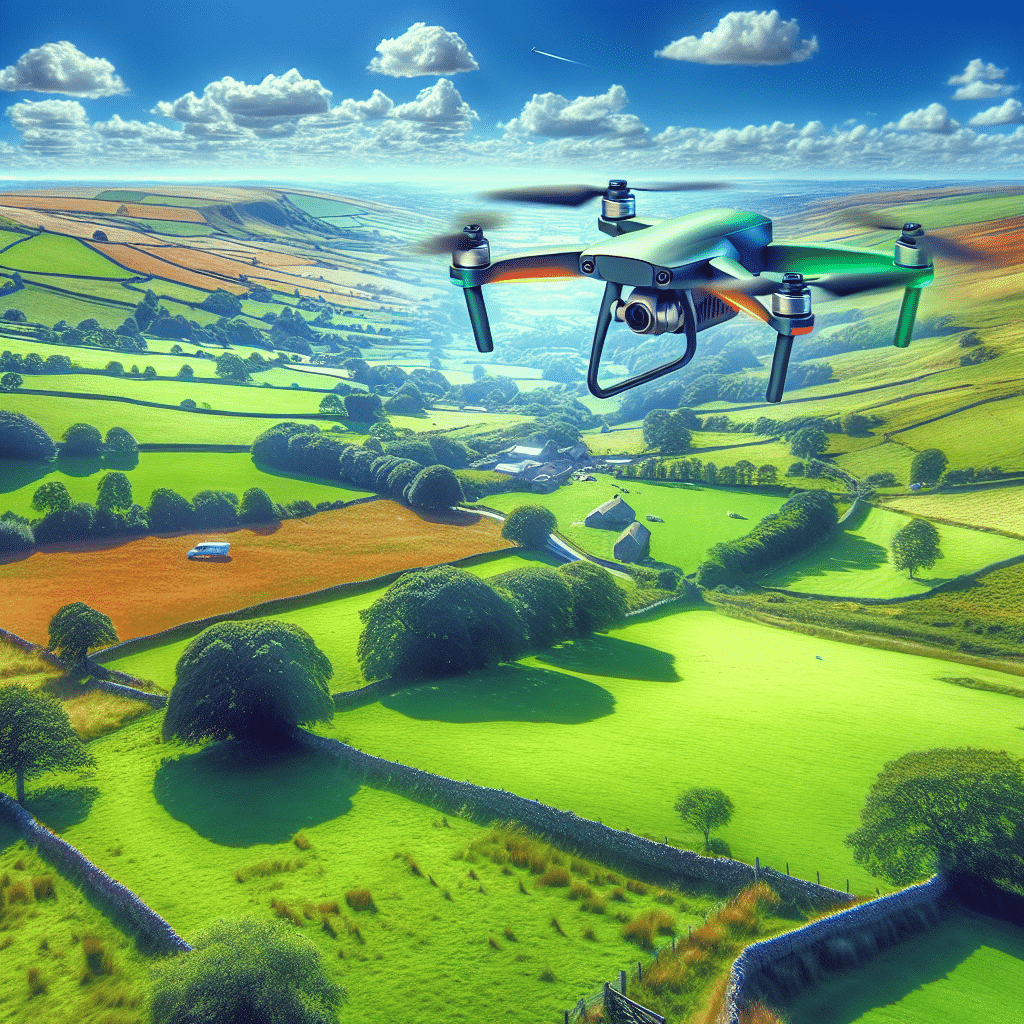How to Fly Safely in the UK: CAA Drone Rules & Top Memaero Tips
In This Article
- Register for an Operator ID and Flyer ID if required
- Always remain within visual line of sight during flight
- Abide by altitude and distance restrictions
- Check drone and weather conditions before each use
- Understand local flying laws and required permissions
- Stay current with evolving CAA guidelines
- Consider drone insurance for added protection
- Choose reliable suppliers like Memaero for full compliance
Why Safe Drone Flying in the UK Matters
Understanding Legal and Social Impacts
The expanding interest in personal and commercial drone use across Britain has made UK drone regulations more relevant than ever. As when introducing any emerging technology into society, the government and aviation authorities need to ensure safety, privacy, and clear divisions of responsibility. For enthusiasts and hobbyists, this means understanding how and where you can legally operate your drone.
Drones have rapidly evolved from niche gadgets into powerful tools used in various industries—from filmmaking and agriculture to infrastructure inspection and delivery services. With this evolution comes increased scrutiny and regulation. The Civil Aviation Authority (CAA) plays a pivotal role in setting these rules to ensure all operations are conducted responsibly, safeguarding not only the user but also the public.
Whether you’re a weekend hobbyist capturing coastal vistas or a filmmaker navigating urban landscapes, adhering to UK drone regulations is more than a legal requirement—it’s a civic duty. Compliance helps prevent accidents, protects airspace integrity, and builds public confidence in drone users. Moreover, it avoids financial penalties or criminal charges, ensuring seamless enjoyment or operation of your UAV (Unmanned Aerial Vehicle).

Understanding CAA Regulations
Learn the Drone Code Fundamentals
The UK drone regulations are governed by the Civil Aviation Authority (CAA), which provides a simplified framework known as the “Drone and Model Aircraft Code.” This code is a legally binding set of guidelines tailored to both leisure and professional users. It emphasises three four-letter words: stay legal, stay safe, and stay responsible.
One of the first principles of the Drone Code is visual line of sight. You must fly so you can always see your drone. This ensures that you maintain direct control and can react to unexpected events. Flying beyond this range is only permitted under specific licencing, usually for enterprise or delivery purposes subject to additional CAA authorisation.
Additionally, the CAA mandates altitude restrictions, with a typical maximum of 400 feet (around 120 metres) above ground level. This ceiling helps prevent conflicts with crewed aviation activities and keeps drones within a manageable distance.
If you plan on taking pictures or recording videos in public, you must respect individuals’ privacy. That includes avoiding areas where people might reasonably expect privacy, such as gardens, homes or private events. Failing to do so can lead to GDPR implications or legal complaints. Understanding these factors is critical for compliance and responsible flying.
“Following the Drone Code is not optional—it’s the foundation of safe flight and public trust in drone technology.” – Civil Aviation Authority
Drone Registration in the UK Explained
Under current UK drone regulations, drone registration is required for most users. However, two separate obligations exist depending on your involvement. If your drone weights 250g or more, you will need an Operator ID. This ID is assigned to the person or organisation that is responsible for the drone. Even if you only fly drones as a hobbyist, you’ll still need to register as an operator.
Additionally, if your drone has a camera—even if it weighs less than 250g—you often need to register as a flyer by obtaining a Flyer ID. To get a Flyer ID, you must pass a brief online theory test issued by the CAA. Fortunately, it’s free and accessible, making it a simple process for most users.
The Operator ID must be visibly displayed on all registered drones. This helps with identification in the event of an incident or civil enquiry. Children under 18 can get a Flyer ID but will need a parent or guardian to hold the Operator ID. The registration lasts for one year and must be renewed to remain compliant.
Flying Rules by Drone Weight: Under and Over 250g
Drone weight is a critical factor in determining which UK drone regulations apply to your flight operations. Drones under 250g often have fewer restrictions, owing to their minimal physical footprint and generally safer operating characteristics.
For example, drones weighing less than 250g, like the DJI Mini series, do not require a Flyer ID if they lack recording capabilities. However, if equipped with a camera—which most are—you must register accordingly. These drones can be flown closer to people and buildings but should still avoid crowds or congested areas.
For drones weighing over 250g, regulations become more stringent. These UAVs must never be flown over large gatherings or within 50 metres horizontally of uninvolved persons. You’re also barred from flight in restricted airspace unless you’ve obtained suitable permissions. Additionally, heavier drones generally fall into the Open Category A2 or A3, potentially demanding additional competency certificates or coursework.
Being weight-conscious is not merely a formality—it defines your responsibility and level of operational freedom.
Where You Can and Can’t Fly in the UK
Understanding where you’re allowed to fly is a cornerstone of safe drone operation. According to UK drone regulations, unauthorised use within restricted airspace—such as near airports, government buildings, or military installations—is strictly prohibited under law. Violators can face severe penalties, including fines or imprisonment.
Airport flight restriction zones (FRZs) are particularly strict. You must gain explicit CAA and air traffic control approval to fly within these zones. Many recreational pilots mistakenly assume distance is a sufficient safeguard, but an FRZ can extend several kilometres from the runway end. Always consult the <a href="UK Civil Aviation Authority drone flying code“>NATS Drone Assist App or a CAA-verified map before planning a flight.
Parks and public spaces often carry their own drone policies, and flying may be prohibited even if the airspace is unrestricted. This is governed by local councils and enforcement falls under public nuisance laws. In London, for instance, many boroughs require specific permission to launch or land drones in public parks.
Private landowners may prevent you from operating from their property. Even if your drone doesn’t land on their grounds, trespassing laws can still apply. To remain in full compliance, always obtain landowner permission for launching and landing.
Tips for First-Time Pilots from Memaero
Memaero is deeply committed to empowering new drone users with accurate guidance and top-tier hardware suited for navigating UK drone regulations. For those new to this field, the learning curve can appear steep—but with Memaero’s curated tips, you can master the essentials quickly and safely.
Start with a drone under 250g. Lightweight options are easier to manage and offer fewer regulatory burdens, making them ideal for learning how to pilot responsibly. Brands like DJI and Autel offer excellent entry-level models that still have powerful capability.
Next, familiarise yourself with both the Drone Code and your specific drone’s manual. The manufacturer’s documentation often includes critical safety notices and calibration procedures. Combine manufacturer advice with CAA guidance to form a holistic pre-flight plan.
Memaero also recommends practising in wide, open and legal areas. Avoid urban settings until you’re confident in your control. This reduces the risk of property damage or public disturbance and allows you to build muscle memory without pressure. For more advice, explore Learn more about Safe and Responsible Drone Flying in the UK.
Do You Need Drone Insurance in the UK?
While drone insurance is not mandatory for recreational flyers under UK drone regulations, it is highly recommended. For commercial operators, however, it is a legal requirement under EC regulation EC785/2004. This regulation mandates third-party insurance for any commercial aviation activities—including unmanned systems.
Insurance can cover a multitude of potential risks. These include accidental damage to persons or property, theft or loss of the drone, and legal defence in case of complaints or investigations. For commercial pilots, failing to secure adequate insurance could lead to criminal charges and prohibited operations.
Even casual users benefit from insurance. Accidents can happen regardless of experience. For instance, a sudden software glitch or signal interference might cause your drone to veer off course. Insurance offers peace of mind as well as financial protection.
Memaero offers product bundles that include insurance options tailored to your drone and use case. Learn more through Read a related article.
Practical Pre-Flight Checklist
A pre-flight checklist will ensure your drone operations comply with UK drone regulations and minimise potential technical issues. A reliable checklist should include the following items:
- Check weather conditions and visibility
- Ensure firmware is updated on your device and controller
- Inspect for physical damages, including rotors and battery casing
- Verify GPS signal lock and home-point storage
- Check propeller attachment and overall motor stability
- Calibrate compass and gimbal if prompted
- Assess surrounding area for hazards (trees, cables, people)
- Confirm sufficient battery level and backup
- Review CAA-approved fly zone maps via the Drone Assist App
By running through this list systematically, you will not only optimise your drone’s performance but also meet safety protocols expected by aviation authorities.
Staying Up to Date with CAA Law Changes
UK drone regulations are subject to review and iterative updates. As drone adoption grows, so too does the need for evolving legal frameworks. The CAA frequently publishes changes or amendments, particularly around airspace classifications, weight categories, or camera use limitations.
Subscribing to CAA newsletters or joining recognised drone user groups can provide early alerts on these shifting regulations. Academic whitepapers and drone law forums often interpret legal jargon into accessible summaries, helping users stay current and compliant.
Mobile tools like the <a href="Explore EU compliance for tech products“>Drone Safety Map and community platforms also offer real-time updates on restricted areas, weather advisories, and public complaints. Constantly educating yourself is not just wise—it ensures that your drone flying remains entirely legal.
Why Choose Memaero for Your First Drone
Memaero stands out as a preferred choice for anyone new to flying under UK drone regulations. With a range of lightweight, CAA-compliant drones, users can fly confidently from day one. Each Memaero purchase includes fully localised support, expert advice, and optional insurance offerings to match your risk level and drone category.
The company also provides intensive onboarding materials, from printed manuals to online video tutorials [VIDEO_PLACEHOLDER]. With a focus on transparency and regulatory alignment, all Memaero products are pre-assessed for UK legality. In short, they remove the guesswork entirely.
Conclusion: Start Flying Legally and Responsibly
[CONCLUSION_CONTENT]
Great guide on fly-safely-uk-caa-rules-memaero-tips – Community Feedback
What rules must I follow to fly a drone in the UK?
UK drone pilots must register their drones (over 250g), keep flights below 120m, always maintain visual line of sight, and avoid restricted airspace. Follow the CAA Drone Code, respect privacy, and prioritise public safety whenever you fly.
Do I need insurance to fly a drone in the UK?
Insurance is a must for commercial drone flights, but optional for drones flown purely for recreation under 500g. However, having insurance is strongly recommended even for hobby pilots for peace of mind.
Can I fly a 249g drone anywhere in the UK?
You can fly drones under 250g in most residential, recreational, and industrial areas, but you must always fly safely, avoid crowds, and obey any local restrictions or landowner rules.

